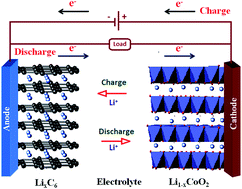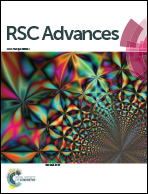An overview of AB2O4- and A2BO4-structured negative electrodes for advanced Li-ion batteries
Abstract
Energy-storage devices are state-of-the-art devices with many potential technical and domestic applications. Conventionally used batteries do not meet the requirements of electric or plug-in hybrid-electric vehicles due to their insufficient energy and power densities. Graphite is used for the conventional anodes of Li-ion batteries. However, the specific capacity (372 mA h g−1) of a graphite electrode is not sufficient for high-power applications. Therefore, Co-, Ni-, Mn-, and Zn-based simple oxides have been investigated as anode components due to their high specific capacities (500–1000 mA h g−1). Among these, Co-based anodes have demonstrated the best electrochemical performances; however, Co's high cost and toxicity limit its use as an ideal anode component. Recently, mixed-metal oxides with AB2O4 (A = Cu, Co, Ni, Mn, and Zn; B = Co, Mn, and Fe) and A2BO4 (A = Co, Mn, and Fe; B = Sn, Si, Ti, and Ge) structures have received much interest, and their electrochemical performances have been extensively studied. This type of mixed-metal oxide affords the following main advantages: they store charge through conversion as well as alloying–dealloying processes, and they exhibit higher electronic conductivities than that obtained with simple metal oxides. The above points indicate the importance of AB2O4- and A2BO4-structured materials. The present review emphasizes the recent literature on the electrochemical performance of AB2O4- and A2BO4-structured materials and their composites and feasible ways to implement these materials in Li-ion batteries in the near future.


 Please wait while we load your content...
Please wait while we load your content...